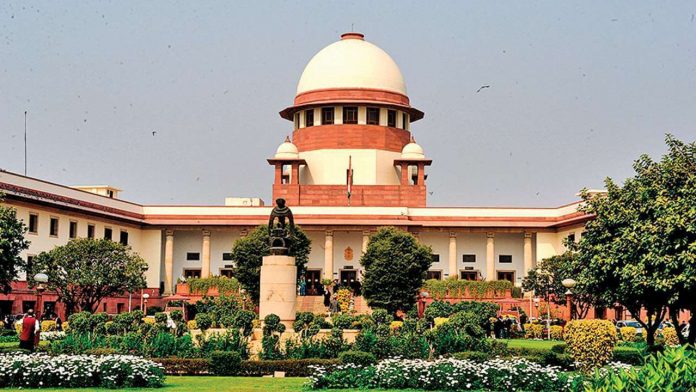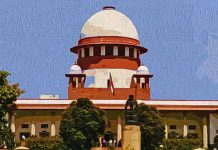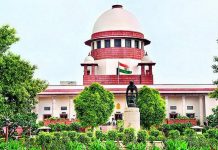This article has been written by Smaranika Sen from Kolkata Police Law Institute. This article exhaustively deals with the problems of the short tenure of the Chief Justice of the Apex Court.
Table of Contents
Introduction
The head of the Indian judiciary is the Chief Justice of India. The Chief Justice of India presides over the Supreme Court of India. The Chief Justice plays a very important role in the judiciary system. The Chief Justice deals with both judicial functions and administrative functions of the Supreme Court. The Chief Justice of India usually holds the post till 65 years of age. A lot of times, it has been observed that the tenure of the Chief Justice is quite short. This has often led to many debates among the people of the country. Through this article, we will try to analyse why the apex court requires the Chief Justice of longer tenure.
Supreme Court and its importance in the judiciary
India has an essence of a federal system of government. The powers of the country are divided between the central and the state governments. This division of power is made by the Indian Constitution. It has been observed that the language of the Constitution is sometimes interpreted differently by different authorities at different times. This often leads to disputes between the centre and its constituent units regarding their respective powers. Therefore, to maintain the supremacy of the Constitution, independent and impartial authority was required which would decide the dispute between the centre and the states or the States inter se. It was believed that this power could only rest in a judicial body, and this led to the formation of the Supreme Court. The Supreme Court under our Constitution is an interpreter of various statutes. It is the final interpreter and the guardian of the Constitution. The Supreme Court also protects the civil and minority rights, and the fundamental rights of the people. It further creates a distinction between individual liberty and social control. It is the final interpreter of the general law of the country, etc. It is also the highest court of appeal in civil and criminal matters.
Composition of the Supreme Court
The Supreme Court is composed of the Chief Justice, and other judges. The Parliament has the power, by law, to increase the number of judges. Initially, the total number of judges was seven. In 1977, it was increased to seventeen excluding the Chief Justice. In 1986, the number of judges increased to twenty-five excluding the Chief Justice. In 2009, the number of judges was increased to thirty excluding the Chief Justice. Thus, the maximum number of judges at present in the Supreme Court can be thirty-one. The Constitution, however, is silent on the minimum number of judges for a bench for hearing cases. At present, there are twenty-six judges including the Chief Justice of India in the Supreme Court.
Appointment of the Chief Justice
The majority of the members of the National Law Commission decided that the appointment to the office of the Chief Justice of India should be made on the basis of seniority. In seniority, the senior-most judge is considered to hold the office of the Chief Justice of India. The Constitution, after the 99th Amendment Act, 2014, amended some articles regarding the appointment of judges in the Supreme Court. After the amendment, it was held that every judge of the Supreme Court shall be appointed by the President by warrant under his hand and seal on the recommendation of the national judicial appointments commission. The amendment also stated that no further consultation is required by the President regarding the appointment of Judges of the Supreme Court and high court. The National Judicial Appointment Commission as per Article 124B of the Constitution have certain functions. The functions are:
- Recommendation for the appointment for Chief Justice of India, judges of the Supreme Court, Chief Justices of high courts, judges of the high courts.
- Recommendation of the transfer of the Chief Justice and other judges of high courts from one high court to another.
- Ensuring the person recommended is of integrity and ability.
However, under Article 124C, the Parliament has the power to regulate the procedure for the appointment of the Chief Justice of India and other judges of the Supreme Court, the Chief Justice and other judges of the high court. The parliament has also the power to empower the Commission by regulating the procedure for the discharge of its functions, the manner of selection of persons for the appointment, and any such matters which can be considered as necessary.
In the case of Supreme Court Advocates-on- Record Association v Union of India, (2015), the Supreme Court declared that the 99th Amendment of the Constitution and the National Judicial Appointments Commission Act, 2014 unconstitutional and void. It stated that the system of appointment of judges to the Supreme Court, Chief Justices, judges of the High Court, transfer of Chief Justices and judges of High Court from one High Court to another as existing prior to the 99th Amendment, which is also known as the collegium system will become operative. Honourable Justice Jagdish Singh Khekar stated that Section 5(1) of the National Judicial Appointments Commission Act 2014, provided that the senior-most judge of the Supreme Court will be appointed as the Chief Justice of India subject to the condition of being considered ‘fit’ to hold the office. It was observed that the term ‘fit’ was unambiguous. The term did not define any definite meaning or characteristics. The parameters were not clear about the term ‘fit’ and what it wanted to state about the senior-most judge of the Supreme Court under Section 5 of the Act. It can be tailor-made to choose a candidate from the seniority list. The Supreme Court also observed that it was not within the ambit of the Parliament to subject the process of selection of judges in the Supreme Court or to the position of Chief Justice of India in answer in ambiguous terms.
As already stated above, this case revived the earlier collegium system. However, the earlier collegium system was criticized for opacity. Therefore, some changes were introduced in the collegium system. It was decided that the government of India will finalize the existing memorandum of procedure by supplementing it in consultation with the Chief Justice of India. The Chief Justice of India will take a decision based on the unanimous view of the collegium comprising the four senior-most judges of the Supreme Court.
Appointment procedure
The Constitution does not provide any specific procedure or rule for the appointment of the Chief Justice of India. Some conventions and precedents are used for the appointment of the Chief Justice of India. The senior-most judge of the Supreme Court is considered to be the Chief Justice of India. The outgoing Chief Justice of India often recommends the Union minister of law for the appointment of the next Chief Justice of India. If it is observed that there is any ambiguity regarding the fitness of the senior-most judge, then, there can be a consultation with the senior judge of the same court for the appointment of a new judge in the post of the Chief Justice of India. The Union Minister of law recommends the post of the Chief Justice of India to the Prime Minister who eventually advises a President regarding the appointment of the post. Lastly, the President appoints the Chief Justice of India.
There is often a doubt whether the government has the power to interfere regarding the appointment of the Chief Justice of India. The government does not have any power regarding the appointment of the Chief Justice of India except the Law Minister.
Tenure of the Chief Justice of India and its effect
The Indian Constitution has not provided any specific period regarding the tenure of the Chief Justice of India. It is however believed that a judge of the Supreme Court may hold the office until the age of 65 years. A judge can also resign his office by writing to the President. Usually, a judge of the Supreme Court is not removed from his office. The judge can be only removed from the office by an order of the President passed after an address by both the houses of the Parliament supported by a majority of the total membership of that house and not by a majority of not less than two-thirds of the members of the house present and voting. The grounds of removal are usually misbehaviour or incapacity.
Now, a person to be qualified for the appointment as a judge of the Supreme Court qualifies certain conditions. Out of many conditions, a person must be a judge of a High Court for at least 5 years or the person must be a practising advocate of a high court for at least 10 years. At times, a non-practising or academic lawyer may also be appointed as a judge of the Supreme Court if the President thinks so. A person to be qualified for the appointment as a judge of a high court has also certain conditions to fulfil. Out of many conditions, a person must hold a judicial office for at least 10 years in the territory of India or must have been an advocate of a high court for at least 10 years. This shows that a person to be qualified for the position of the Chief Justice of India needs a lot of years of experience. From the above, we also know that a person can hold his office in the Supreme Court as a judge till 65 years of age. Thus, it is often observed that the Chief Justice of India holds office for a shorter period.
Impact of short tenure
The tenure of Chief Justice of India, as already stated above, is usually observed to be short. This often raises several opinions and questions among the minds of eminent persons, common man, etc. Many believe that the inconsistent terms of the Chief Justice of India create a difficult situation towards the functioning of the collegium and the Supreme Court. It has also been observed that short tenure or irregular terms of the Chief Justices of India often creates a delay in the judicial reforms. However, it goes without saying that there have been several Chief Justice of India who had impactful tenures. Then, there might be a question as to why short tenure is not preferred among people. Among the various notable jurists, it is believed that the position of Chief Justice of India holds immense responsibility for the judicial system of India. Therefore, a larger tenure of the Chief Justice of India helps in improving the management system of the administration system of the judicial department of the country. On the other hand, in a shorter tenure, the Chief Justice of India usually does not get enough time to look upon the other matter after dealing with the emerging issues at hand.
The Law Commission had also reported that there had been inconsistency in the tenure served by the Chief Justice of India. It further stated that the appointment of the Chief Justice of India should also need to be re-looked upon. The Chairperson of the Law Commission stated that the Chief Justice of India should get a fixed tenure of 2 years in case their tenure as CJI is less than 2 years.
Scenario of the tenures of Chief Justice of India
It has been observed that since independence, the average tenure of Chief Justice of India is approximately 17 months. The shortest tenure was of former honourable Chief Justice K N Singh. The tenure was only for 17 days. The longest-serving Chief Justice of India was former honourable Chief Justice Yeshwant Vishnu Chandrachud. He had served for almost over 7 years. Data shows that 22 of the honourable Chief Justice of India have served longer tenures.
Why do we need a long tenure
The long-serving tenure of the Chief Justice of India is needed because the continuity of the serving period provides quality judicial administration throughout the country. In a long-serving tenure, the Chief Justice of India can make various reforms that are required in the judicial system. There might be a question that the other senior judges of the Supreme Court cannot make judicial reforms. The answer is that the Chief Justice of India holds immense power. The Chief Justice is known as the ‘master of the roster’. During the tenure of the former honourable Chief Justice of India Dipak Misra, he stated that the Chief Justice is the master of the roster and has the privilege to constitute the Benches of the Court and allocate cases to the benches so constituted. He also stated that no judge has the power to take up any case on his own until and unless it is allocated by the Chief Justice of India. The Chief Justice of India can also act as a President of the country in cases where both the office of the President and the Vice-President are vacant. The table of precedence shows the hierarchy of the important positions in the Indian subcontinent. In the table of precedence, the Chief Justice of India holds the sixth position. This clearly shows that the Chief Justice of India holds a vital role in the country.
The Chief Justice of India due to lack of time cannot consult and meet various traditional personal and Bar members to discuss the problems or difficulties taking place in the Indian judicial system. The collegium system often creates a burden on the judiciary system because there are already many cases pending in court and the need of appointing the Chief Justice of India after one or two years at times creates a burden upon the Apex Court. It is often observed that the limited number of days of the Chief Justice of India makes it difficult to address the most significant issues in the legal system of India. At times, it has also been observed that by the time the Chief Justice of India recognises or understands the problem the tenure comes to an end.
The former attorney general KK Venugopal at the occasion of farewell of former honourable Chief Justice of India SA Bobde stated that the Chief Justice of India should at least have a tenure of 3 years so that the reforms initiated by a particular Chief Justice of India can be taken into its logical conclusion. Former honourable Chief Justice of India Palanisamy Gounder Santhasivam stated before his retirement that he had a tenure of nine months and eight days as the Chief Justice of India. Further, he stated that he wanted to do various things during his tenure but was unable to do that. He also stated that the Chief Justice of India must have a fixed tenure like the government functionaries. Another honourable Chief Justice of India Tirath Singh Thakur has stated that even if there are reforms in various other sectors it would become meaningless without relieving the judges of the monstrous burden of pendency that forces a litigant to spend frustrating years in search of justice. The above statements and opinions of various eminent jurists and former Chief Justices prove that even they believe a longer tenure is more beneficial for the Chief Justice of India.
Conclusion
The inconsistent tenure of the Chief Justice of India began after independence. It has been observed that we have seen 48 Chief Justice of India in the past 70 years. This is quite a huge number. This leads to various difficulties in reforming and solving the problems of the Indian legal system. Therefore, this issue of short tenure must be addressed by the competent authority.
References
- https://www.barandbench.com/news/litigation/tenure-of-chief-justice-of-india-should-at-least-be-3-years-attorney-general-kk-venugopal
- https://data.indianexpress.com/chief-justice-dipak-misra-tenure-impact-analysis/
- https://www.jagranjosh.com/general-knowledge/how-is-the-chief-justice-of-india-appointed-know-all-about-the-collegium-system-here-1616587484-1
- https://www.lawctopus.com/academike/short-legacy-of-chief-justice/
- https://www.thehindu.com/news/national/the-hindu-explains-master-of-the-roster/article22437561.ece
Students of Lawsikho courses regularly produce writing assignments and work on practical exercises as a part of their coursework and develop themselves in real-life practical skills.
LawSikho has created a telegram group for exchanging legal knowledge, referrals, and various opportunities. You can click on this link and join:
https://t.me/joinchat/J_0YrBa4IBSHdpuTfQO_sA
Follow us on Instagram and subscribe to our YouTube channel for more amazing legal content.
 Serato DJ Crack 2025Serato DJ PRO Crack
Serato DJ Crack 2025Serato DJ PRO Crack










 Allow notifications
Allow notifications



